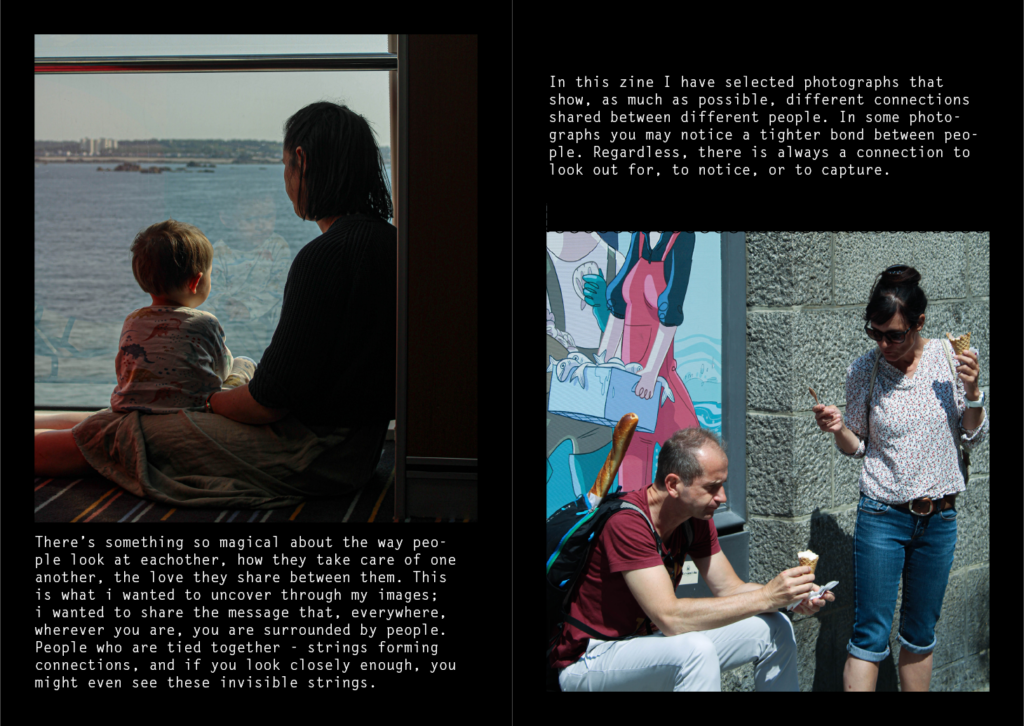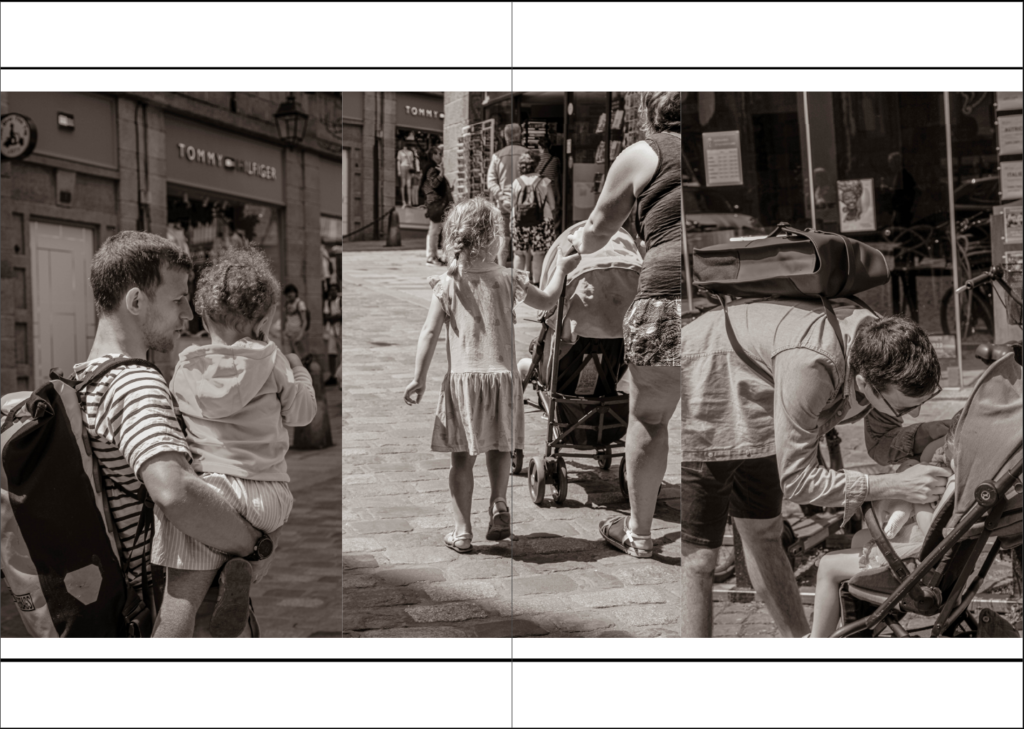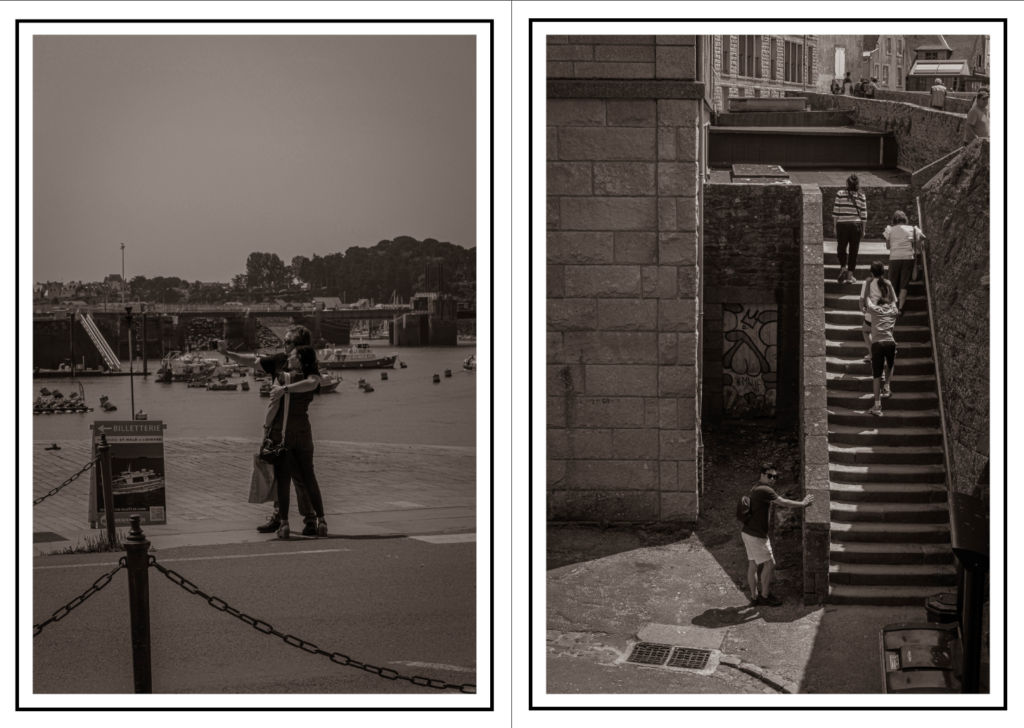All posts by Wiktoria Markiewicz
Filters
Elizabeth Castle
For the film project we decided to divide the tasks between us free and we were all in charge of different tasks. I was collecting and recording as many sounds as possible, on a sound recorder. Pip was taking still images and Phoebe was collecting video clips we would potentially use. as I mainly focused on sound, not only collecting it but also alternating it, editing it and more, I also decided to have a go at editing some of the images.
Photoshoot
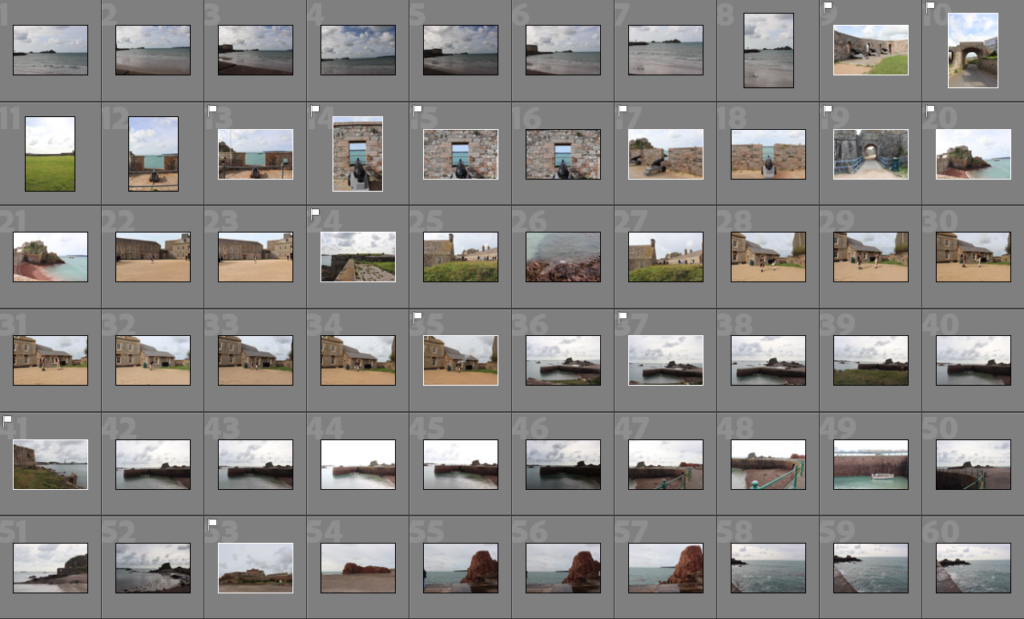
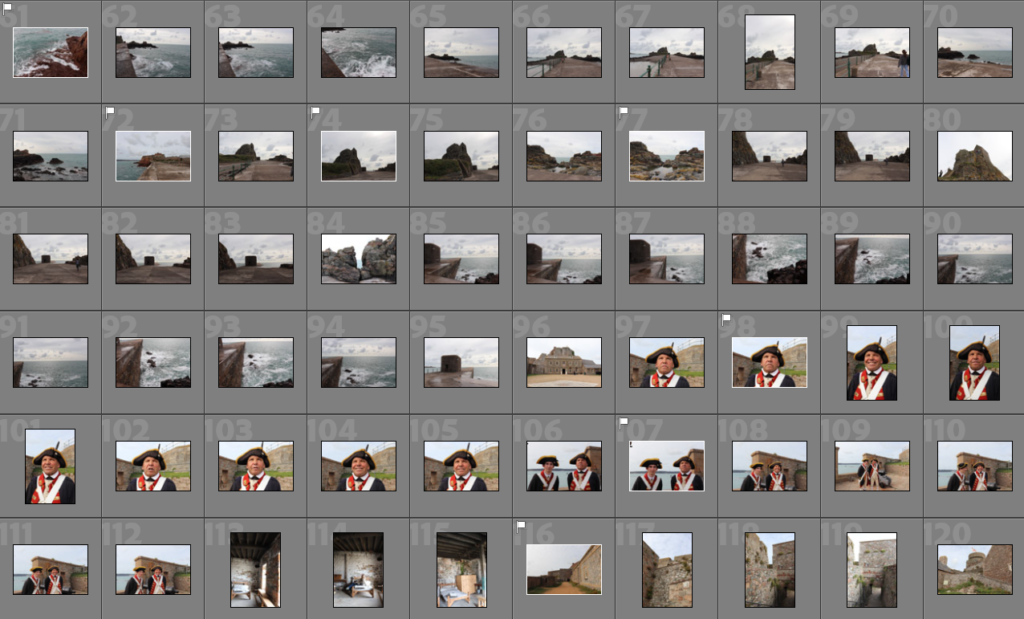
Sub Selection
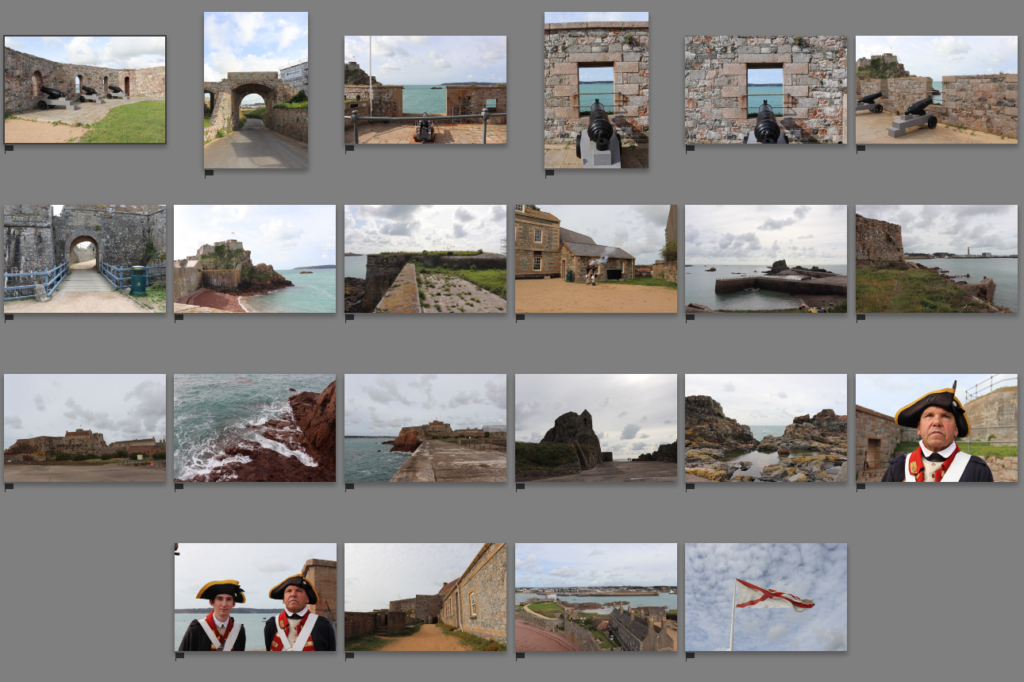
Editing
I tried not to change the original image too much and just focus on heightening the contrast and sharpness as well as with a little bit of different tone.

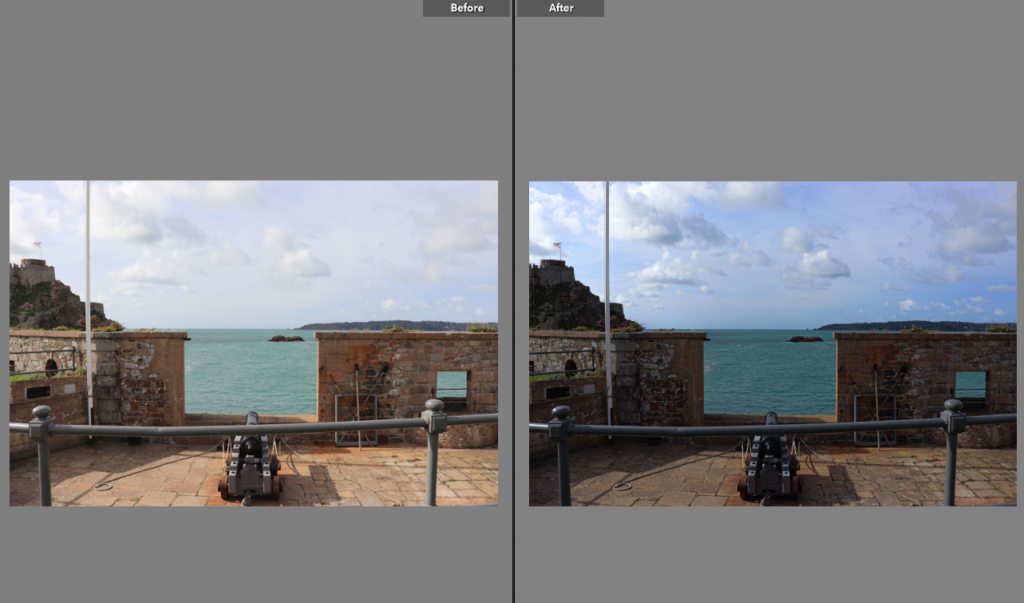
Overall regarding the fact that we all had different tasks, we worked together as a group to make sure we all had the same vision and plan for the film. we had to communicate a lot to make sure we were all on the same lines.
“When editing the stills (which we weren’t sure if we were going to include or not) Pip made sure to edit them with standardisation and keep them similar in appearance. This was difficult when images differed in tone because of the balance of light or were darker because of cloud, but Pip tried to ensure that they all had the same feel despite the differences in light/colour in the original images. As a more general overview of changes made, Pip increased saturation and vibrancy to make the images a little less grey, whilst also bringing the contrast and sometimes the highlights down. Pip then adjusted exposure as necessary. Pip thinks she has achieved what she wanted to an extent, but the general greyness and lack of light in the original images made it hard to create images she was truly happy with. In terms of creating images that match the style of Wes Anderson’s work – which is characterised by bold colour palettes, wide lens shots and symmetrical framing – she thinks she has only truly achieved this on a few occasions, which she shows below.”


Film Edits
I have worked with Adobe Audition regarding the sound we would use in the film.

I used a mixture of the sounds colected, from the castle by me but also sounds that was collected by Sam. These were titles Elizabeth Castle Sound library.
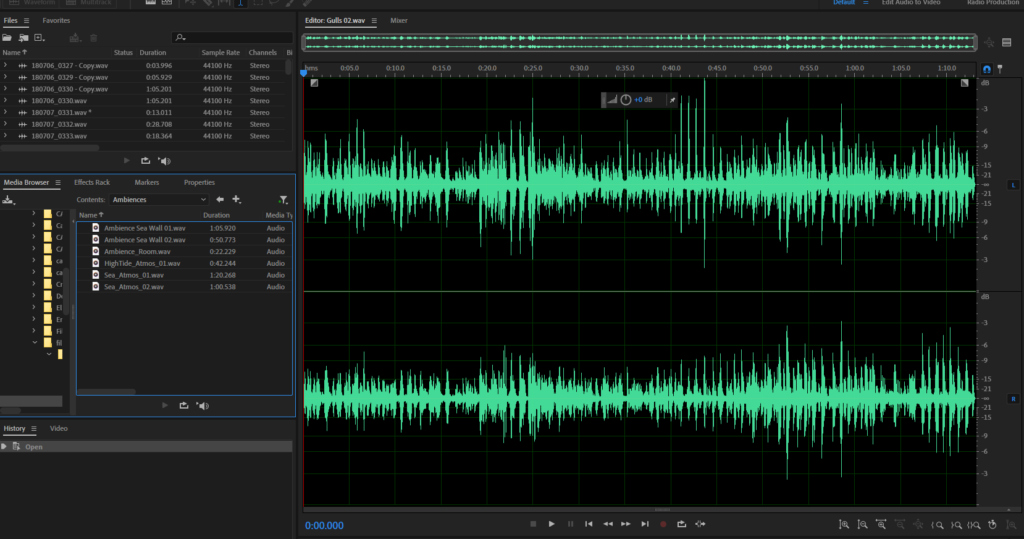
What I had to do is filter each sound I wanted to use, this meant it was “clean” meaning the background noises were eliminated as best as possible. I could quiet down each element of the sound to a desired level.

When selecting effects rack-filter and EQ-parametric equaliser- the above graph is a graph representing the frequencies , by selecting the HP, this blocks the lowest frequencies and the lowest pitch, and the LP blocks the higher frequencies and higher pitch.

there are 2 different lines and the yellow is responsible for the volume, meaning moving it up or down will either quiet it or make the sound louder.
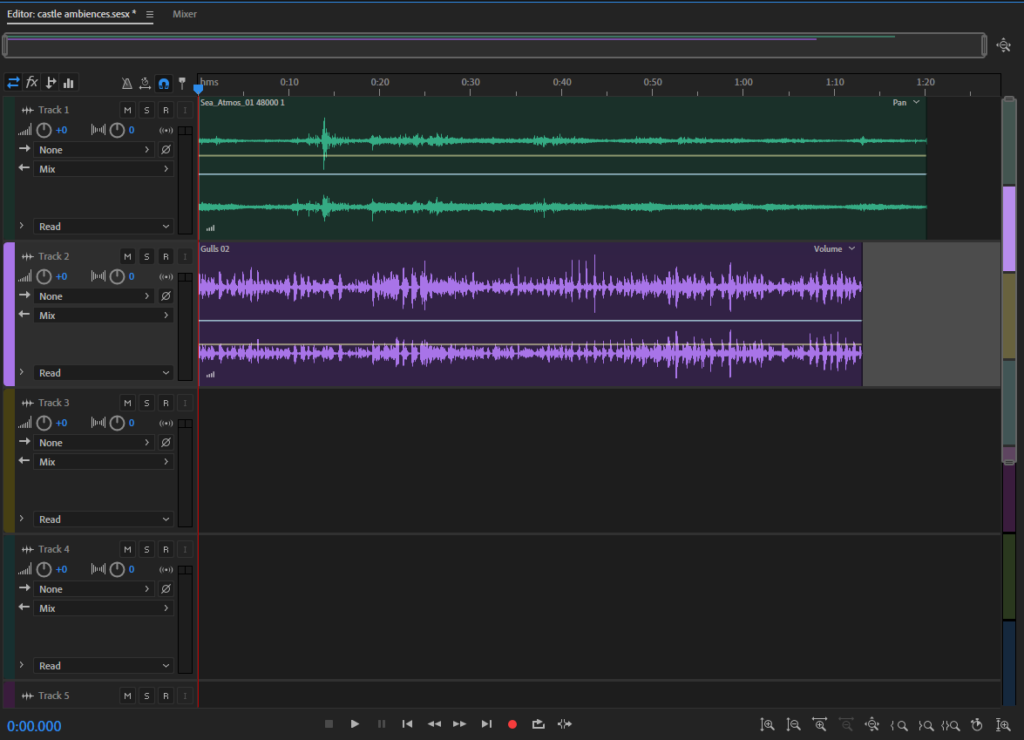
In adobe audition I was able to combine different sounds together to create a sound scheme. I decided to create one consisting of seagulls and the sound of the sea. after cleaning and filtering the sounds I have inserted them in and made sure to save them as a collection, so I know they are a combination of sounds joint together. this makes a great background track, so a sound that is ongoing or primary sound that shapes the mood of the film. other combinations that would have worked well is maybe the sea and people talking in the distance.
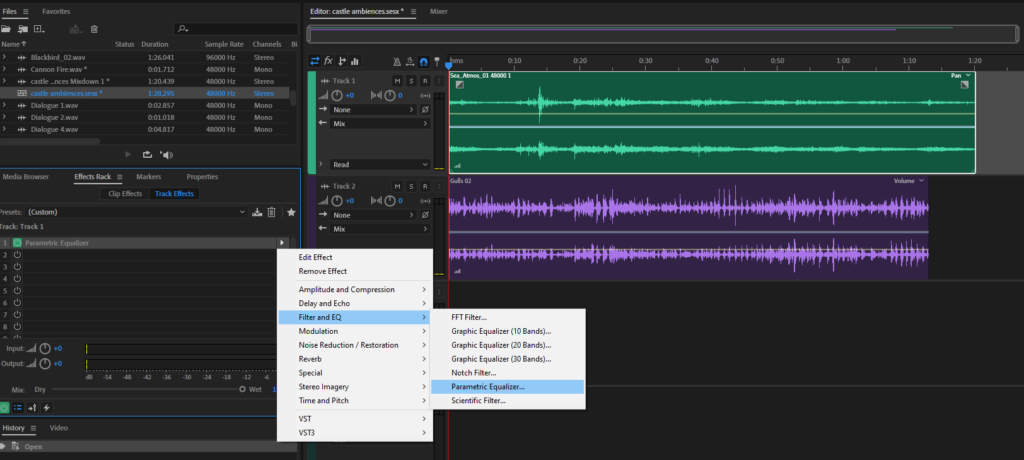
Working with sound is a very important aspect when it comes to films, there are even specific jobs that revolve around people making sound effects or anything that is being filmed, this is to produce a cleanest sound possible so that the quality of it increases the realness of the movie. one of the things that make a great movie is how well the viewer is engaged with it. the more interested they are in the movie the more successful it will be. Sound serves as a vital aspect when it comes to cinematography as it affects the mood, and heightens peoples emotions. for example when the sound is calming and a sudden bang appears, this mixed with the image being displayed, a person is more likely to get scared due to the sound as its an impulse reaction based on what they are seeing and hearing.
This is why I would need to use sound that is relevant to what is being shown. Elizabeth castle is segregated from the land and is surrounded by the sea, therefore sound like the sea, wind, seagulls are most applicable. it is important the sounds I use are not random and link to what is being shown.
Essay: Archives
The Societe Jersiaise photographic archive was established in 1873, they serve as an important resource providing information and artefacts on Jersey’s heritage open to the Jersey community. The material that is collected includes drawings, photographs, documents, paintings and records, making it much easier for people to look into the history and play a significant role in our cultural heritage. the archives play an important role on improving our knowledge of the past meaning having a more informed perspective on both the future and the present.
The impressive work of the archive to preserve the islands history has an impact on the local art scene which strengthens this connection between art and history, the Archisle contemporary art programme hosted by societe Jersiaise since its foundation in 2001 has commissioned renowned artists such as Martin Parr, Tom Pope and Michelle Sank which created artwork to create the vibe of Jersey.
What I really find fascinating is that the photographic archive captures a range of subjects such as documentation such as the islands wildlife, the geography of the island, images of the local population and also significant historical island events. Societe Jersiaise aims and goals are to (“produce and facilitate research on the Island’s history, culture, language, and environment; and to share that knowledge with the widest possible audience for the benefit of our island community”). And what I really like is how this is represented in the Societe active engagement with the local community. This engagement is an ongoing participation in community outreach programmes research initiatives and collaborations with various local partners. There are also conservation and care given to donated artefacts and the Societe members contribute significantly to the communities appreciation of its heritage. This community acts as a cycle of people giving material to be preserved allowing others to learn and inspire them to grow their knowledge and give back to the Societe.


While I was researching the history behind important figures of Societe Jersiaise I stumbled upon the name of Ernest Badoux. Born in 1828, he conducted his photographic work in jersey starting in 1829. Ernest had a total of 1350 of his images primarily focusing on portraits, these are accessible to view on the jersey heritage website. These portraits were only available for the wealthier inhabitants of the island. Although he did focus on portraits, these are some works of his which include landscaped, mainly client’s residences as well as documenting significant events happening at the time. These scenes when put together hold great value as they tell the story of the islands historical transformations. Because of the amount and quality of Badoux’s imagery, it is a greta resource for other people and it shows how the archives serve as a library of knowledge and experimental understanding.
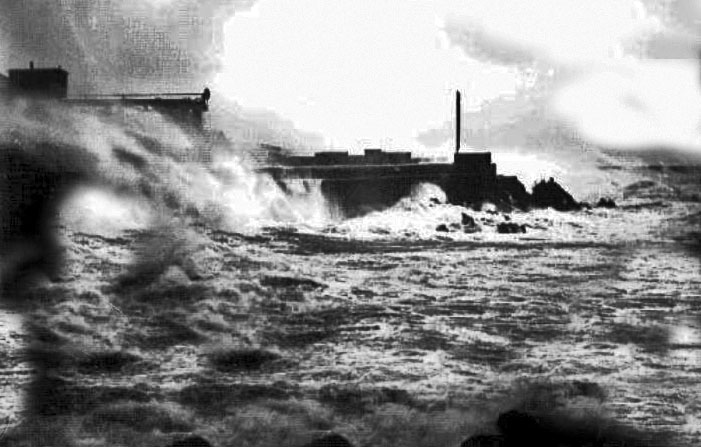
This image, taken by Ernest Badoux in 1886 is one of the many interesting images produced by him but also another historic photograph that takes us back. Although there is not much actual history shown in the photograph meaning there is no specific landmarks or other historic scenery that makes the picture look vintage. With little infrastructure, it focuses on the natural beauty and wildness of the island, however this can be deceiving as the contents of the image itself do not reflect the time at which the image was taken like the other images that I came across which included victorian buildings and portraits of people. What made me choose this image is that although it is a very old image, it still shows the beauty of nature seen in the present day, it is showing one of the only aspects that remain the same. As the image is composed of mainly crashing waves and the violent sea, we can see a glimpse of vague infrastructure in the background. What I find interesting is that the same image image could be produced in the present day with the right equipment whereas other images freeze time, this one feels different as it is relatable to the present day. The photograph itself is bathed in soft hues of late 19th century, his composition skilfully balances the natural elements and human presence with the nature dominating the image but influence of human kind being shown through the buildings, this reflects Badoux’s signature approach of storytelling through images.
The play of the daylight and shadows reveals details casting a nostalgic glow over the waves and rustic architecture in the background. (Le Collete 1886) stands as a testament to Badoux’s ability to transcend the boundaries of a single frame, giving an emotional reflection on the historical aspect of Jersey but mainly timeless beauty in its landscapes.
When taking a leap into early photographic processes, such as daguerreotype, calotype, salt paper prints, wet plate collodion, albumen prints, autochrome and colour transparencies archival imagery is is great record of each . Ernest Badoux uded a chromotype process, also known as “carbon printing”. These produced a sepia tone print with a metallic-like finish. It is amazing that we are able to go back in time through the different processes and photographic evolution, by having records of it, enabled by the jersey archive, and archives all around the world.
In conclusion, the significance of photographic archives, are for the historical images that open many paths into the past, opening windows for peoples understandings of their origins and connecting with their artistic inspiration. For photographers, these archives hold very valuable resources as many photographers and artists incorporate archival material into their works. By people using archival images, it hightens the meanings of the paths and ensures the history is preserved and is not forgotten, this is a pivotal role of archives, shaping our perception of the island and its history. No matter if one is native to jersey, these archives hold significance in illustrating how our island once functioned. They serve as a vital compass guiding us through the historical maze of our island, making them an invaluable resource for our research and exploration.
No Place like home Exhibition
On the day (28/09/2023), we had visited the Art house to see the new exhibition, No Place Like Home. This exhibition is an ambitious showcase curated by Laura Hudson and Rosalind Davis and it considers how we all think of home and our place in the universe.

It is a collaboration of different artists, some even from the UK, their artworks and responses to the subject drastically vary between the artists. Some that I have seen have been little sculptures, detailed drawings, even video responses, photographic responses, and even a self made space shuttle. One of the most popular artworks taking part in this exhibition was a floating earth shown in Queens Valley reservoir. No matter the size of the work, each piece is unique and allows us to question the definition of a home and what it means to us.
We were lucky to be talked to for a brief time by the workers at Jersey art house and we were able to ask any question regarding any form of artwork within the room. The one they had mainly discussed with us was the space shuttle.
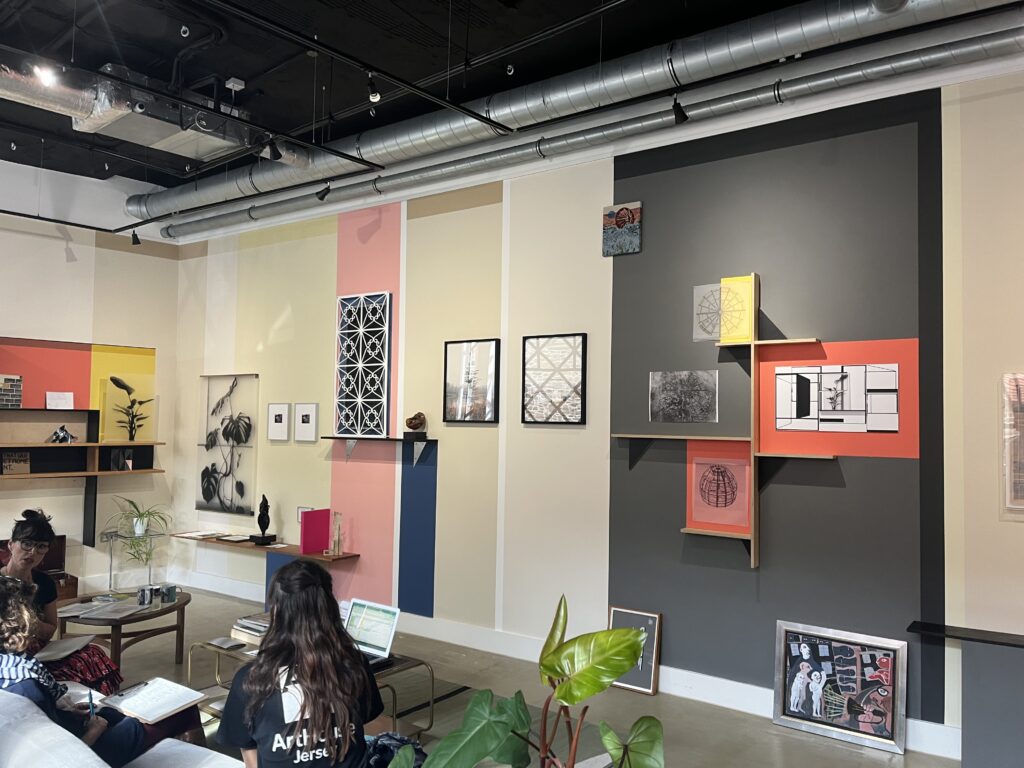

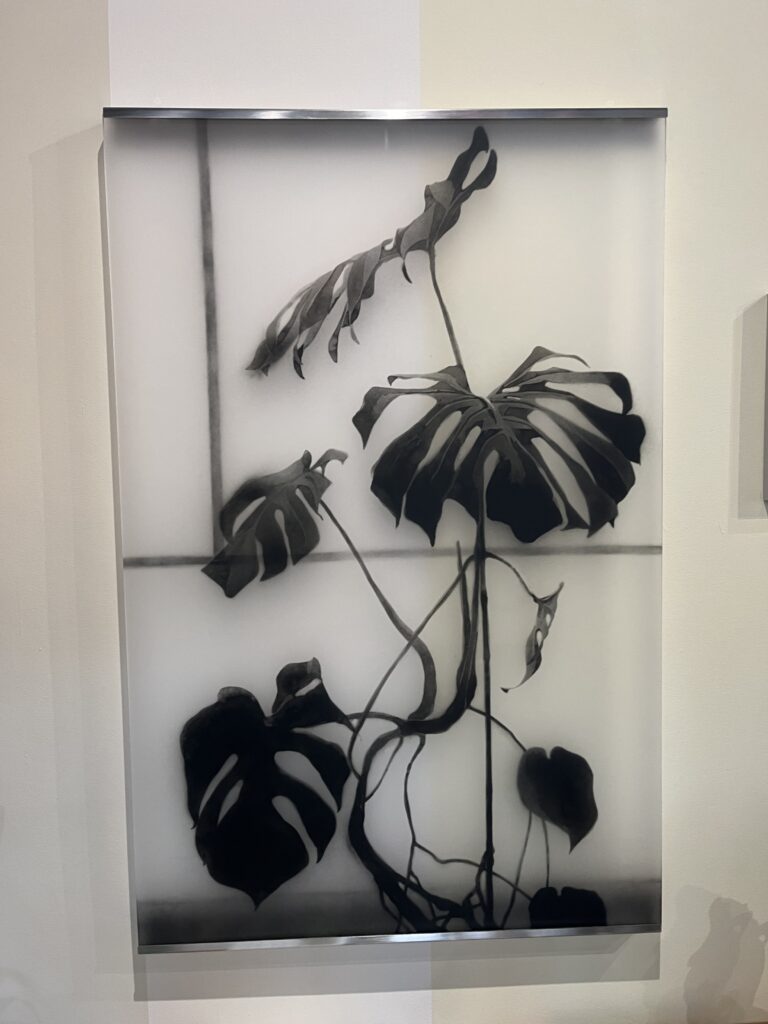
The one that interested me the most was a piece done by Harriet Mena Hill which were clumps of concrete that had very detailed drawings on top of them of flats and apartments. As I got into reading about the artwork, these clumps of concrete were from a social housing demolition site in London. She refaced and painted the concrete with images of remnants of peoples lives who had been moved from their former homes. This piece felt special to me because I was raised in similar surroundings and it felt nostalgic knowing that the concrete used is not random and it has a profound meaning behind it.

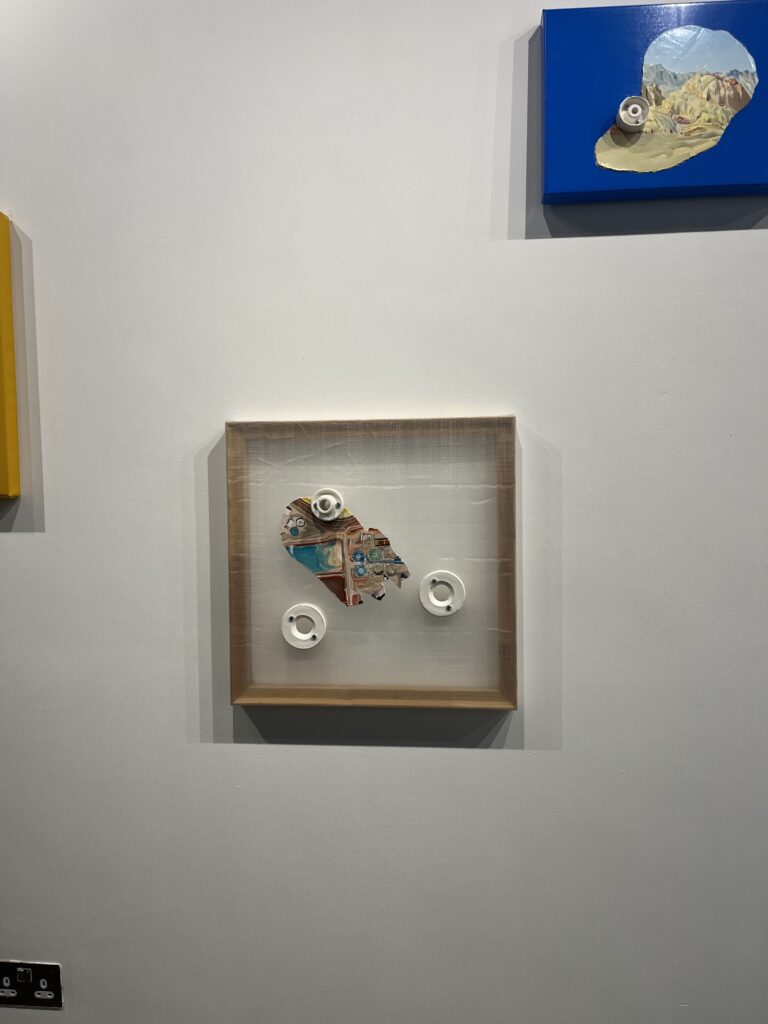
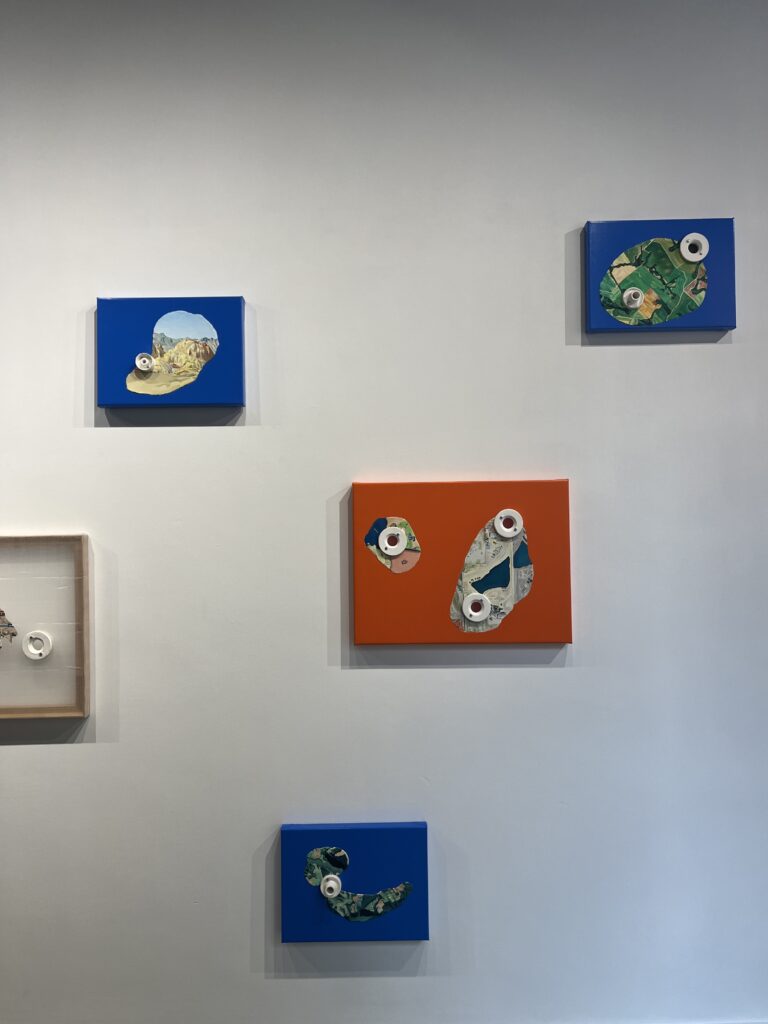
However another artwork I enjoyed was one where paintings were punctured by plaster pieces which were made from casts of mechanical fixtures found on an industrial waste site in Bosnia. This piece was done by Ana Cvorovic. The series began during the first major lockdown in Covid-19, in which time she painted landscape themes and mountainous regions which appear to float like islands on brightly coloured tarpaulins (a material used for cover and protection). The material behind these images are mainly films that influenced her during this time and a series of images from google earth. The paintings are seductive and also objective as if we are looking for a new target. The meaning behind it is to create a contrast between peace and interruption of the natural world and human destruction.
Overall, this is my favourite exhibition that the art house has done so far because of the variety of responses from different artists and how each piece has its own originality and personality.
Trip: Société Jersiaise
We all have gone to Jersey museum & art gallery. In there we have met with chief archivist and archivist assistant, where they have explained what Société Jersiaise is all about.



Jersey archive is like a library of photographs, but not only that but drawing, books, maps or postcards that they store. In the middle of our visit, as we are learning about Elizabeth Castle, they were generous enough to show us material they had stored in boxes regarding the castle.

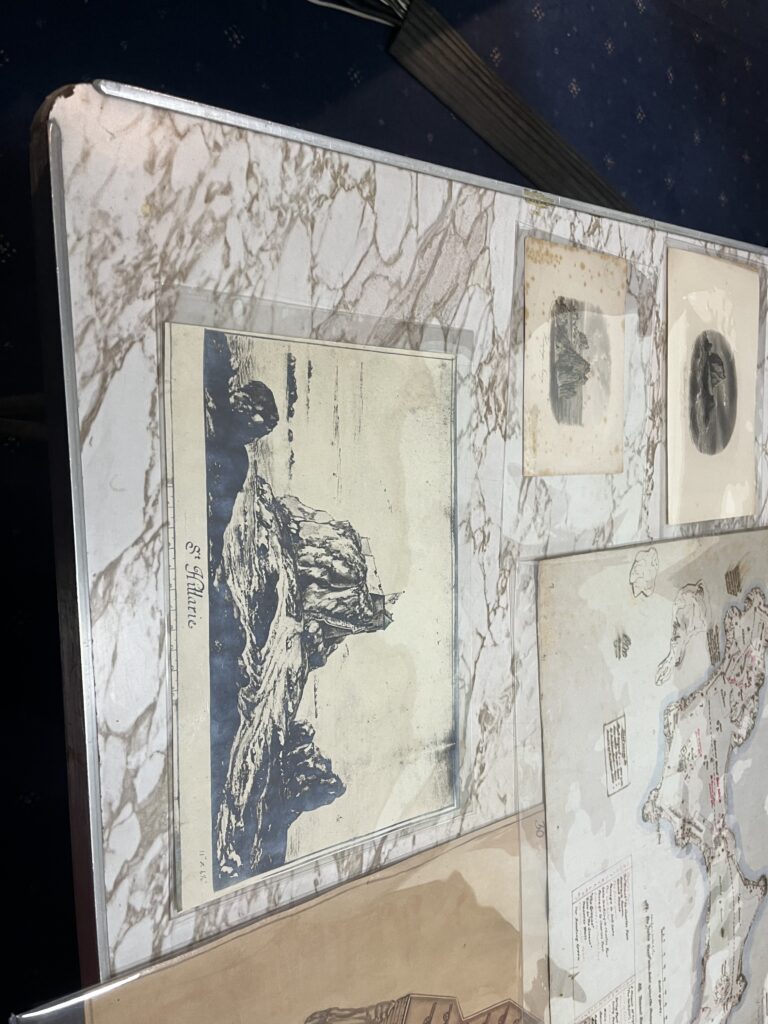



There were items, mainly drawings, some dating from many centuries ago. As the archive got closer to the present day, there was much more material and records.
The topics they have covered are how the archive stores the material, how they get their material, how other people can access this material and many more interesting topics regarding what they specialise in. We were given a brief introduction on how to operate their website as well as how to access the photographs they have on the Jersey Heritage website. Many of the images can be found easily by searching a desired topic or a time frame or even a wanted photographer. I have learnt that anyone can donate photographic material and most / some will be stored in the Jersey archive for many generations of visitors. What I found interesting is that a couple of artists that I have previously researched have worked with the Jersey archive and donated some of their work to the foundation, this includes artists such as Will Lakeman and Michelle Sank. Jersey archive is good to work with and a good source of material, especially for our photography project which is nostalgia. In the future it is very likely that I will be using some of the images from Jersey archive as the themes of nostalgia and nostalgic photographs are what the Jersey archive is made of.
Photographs from the trip:



Chris Marker: La Jétte (1962)

La Jette is a french science fiction film directed by Chris Marker. Released in 1962, its known for the unique storytelling technique and narrative. the film is composed almost entirely of black and white still images, often also using motion footage.
Set in a post-apocalyptic Paris, it follows the story of a man who is chosen for a time travel experiment. the protagonist, haunted by a childhood memory of witnessing a traumatic event at an airport, is sent back in time to gather information for a survival of humanity. Throughout the film, the man encounters a woman from his memory, forming a deep connection with her. As he continues his time-travel journeys, he becomes torn between his duty to the experiment and his desire to be with the woman.

La Jette mainly explored the themes of memory,time and human existence. raising philosophical questions about the nature of existence and the consequences that come with messing with time. whats is important to take in about this film is the innovative use of still images and its non-linear narrative structure. this makes a significant contribution to the science fiction genre.
With it’s thought provoking story line and unique visual style la Jetee has gained critical acclaim and continues to be regarded as a seminal work in the realm of experimental cinema.
What I have learned about cinematography after watching this film is how simplistic creating a film could be. there are many factors that make a good film, like the sound, actors, storyline and presentation. but what I’ve have learnt that a story can be told in many different ways even through still images and a good narrative.
Visuals
The visual elements I will focus on is the aesthetics and eye pleasing aspects of the castle, as well as setting the mood, including the scenery around it, like the beach and sea. There might be some shots that are done in the studio like close ups of portraits.
I collected a brief views/things I will look for to add in the overall film.

I have researched a couple short movies and the ones that stood out to me the most were the ones that I have included bellow.
All the movi3es combined have a certain vibe, this being calmness, everything moving in a slow speed, showing life through a relaxed view. Capturing the beauty of the surrounding in a calm manner. This is what I will inspire to achieve with Elizabeth castle.
About Elizabeth Castle

Constructed on a rocky islet 422 years ago, the castle aided to protect Jersey during conflicts such as the English civil war in the 17th century. The castle was named by the governor of Jersey at the time, Sir Walter Raleigh, “Fort Isabella Bellissima” (the most beautiful Elizabeth), after Elizabeth I. Today, the castle is overseen by the Jersey Heritage Trust as a museum site, the trust take part in regular shows which give an insight to visitors as to what the castle was like when it was used as a military base, musket and cannon firing are only some of these popular displays.

Reaching the castle is easy for visitors as there is a regular ferry service run by the Jersey Heritage Trust. Or for those more willing for a walk, at low tide a walkway is revealed, however it is advised that those walking research the tides as it is not uncommon for visitors to get stranded on the islet as the tide surrounds it very quickly. Visitors can tour the 24 acre islet and explore Georgian buildings that gave retreat to Prince Charles for 10 weeks during 1645 during the English Civil War. There are also more modern additions to the castle as the Germans occupied the Channel Islands in the 20th century and modernised the fortress with battlements, guns and bunkers. The history on the island spans for over 1400 years as it is believed Saint Helier lived in a small hermitage on the islet in 550 A.D. The Hermitage is still standing within the castle and can be visited by those interested.

Life in the castle throughout its years were difficult at times during the 17th century, eight soldiers would stay in one room, often sharing beds, eating a breakfast of thin salty porridge called gruel. Wages were low at only 2 pence per day (for reference, a loaf of bread would typically cost 1 penny), soldiers may use this money for extra food or other goods. Conditions were dirty as soap would cost a soldier 14 pence so infections were common in such cramped spaces. If an infection spread, the castles surgeon would usually cut off the infected limb or use leeches to suck out any infected blood. Soldiers were busy and constantly preparing for an invasion, routinely working in groups of eight to fire cannons that could reach 1300 meters at a rate of twice per minute. This regular exposer to loud sounds left many soldiers with little to no hearing, and frequent use of gunpowder could leave soldiers with weak lungs and kidneys or a respiratory disease.

Completing this research and reading many visitors reviews I understand the most popular attractions to the castle, therefore I can work towards incorporating these aspects in my shoot as well as focusing on the post war attraction theme to help draw in tourists.
Design & Layout
the order of the images had a a significant part on projecting the story, as I wanted to show relationships from a young age How I plan to tell this story is by specifically focus on the placement and order of the images, starting with showing relationships, and love from a young age, then later, adulthood, etc. I want the viewer to feel like they are growing up with the book, although it is not of the same people, its a part of everyone, and everyone goes through it.

First off I started with including two similar images as the front and back cover, these images are of the same scenery except one is out of focus and the other is in focus. On one it is clearer to see the background of people at the beach and on the other the image focuses on the rocks that are in the foreground.
The first two pages are arranged in the way to show what relationships a child encounters from a young age. The first picture being of a mother, represents the first love a child receives which is from their mother. The picture next to it contrasts with what a child sees, which is a love their parents have.
The three images on the next pages are all a collection of my best images of children. I put them in, in this sequence so early on in the zine to show the relationship between child and parents, as this relationship is the first one to experience and usually one that lasts a lifetime.
The first image that is a double page spread, is of two children playing together in the sand. I put this image after the other ones because a child will start to develop friendships from this love that is first displayed by their parents.
Throughout the teenage years the excitement and need for friends continues, this is why at this stage of life we tend to build long lasting friendships. This is why I included an image of two boys that are in their teenage years contrasting with the image of two elderly women. This signifies the importance of lifetime friendships.
Coming back to the storyline of my zine, I wanted to display images of sadness to have a turning point in the storyline. I really like the image on the left, as it shows that love can exist in different forms. Like the homeless person with their dog, that image shows the love he has for his companion and the long-lasting loyalty and dedication through hardships. What we can take from this image is that love and relationships overcome the tough situations we face in life. The image on the right is showing the emotion provoked by this situation. I want to transport the viewers into this moment.
The second double page spread image, is of older people enjoying their day at the beach, taken from above. I have included it in the place in the zine to show what the later years in life are about. This means the relaxation and the nostalgic mindset of life at an older age takes place.
The last images are an ending of the story where people are on the stairs, leaving the area on the beach. This implies they are leaving the story
Below is the finished pages of my zine.

